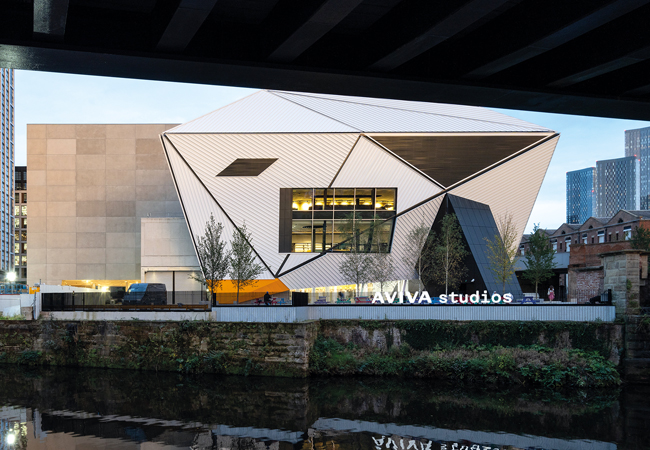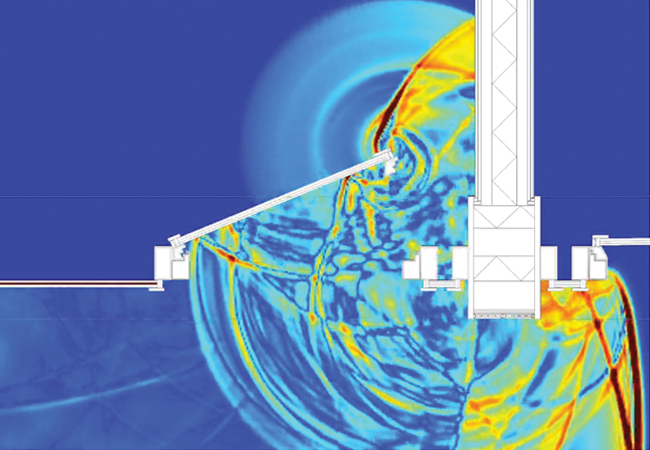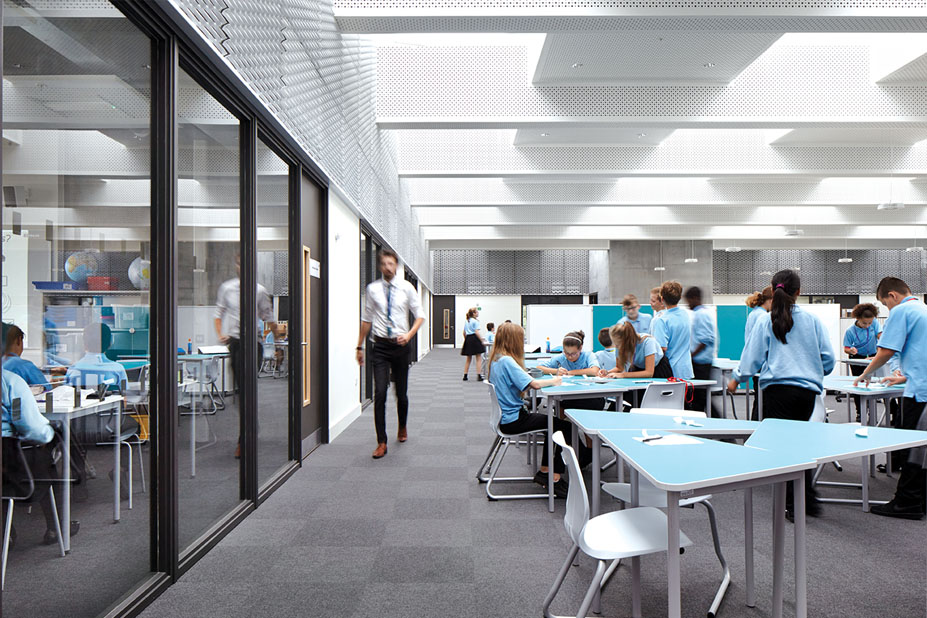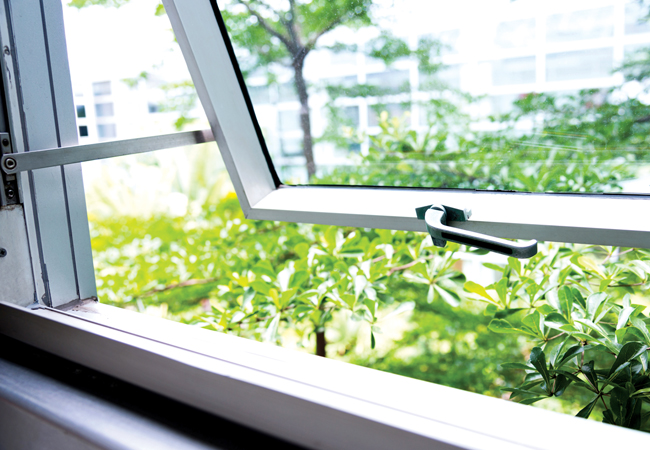
It is becoming increasingly clear that overheating and inadequate indoor air quality are serious issues for new-build housing. In both cases, the influence of noise can be a contributory factor. With overheating, high external noise levels can make opening windows undesirable, and effectively leave occupants with no viable means to control summertime temperatures. A reluctance to open windows will also affect indoor air quality, as will noisy mechanical ventilation systems, with research showing that occupants will turn off plant equipment if they find it too loud.
The design process is not helped by the fact that indoor air quality, thermal comfort and acoustic comfort are often considered independently, sometimes by different design consultants.
To address this issue, the Association of Noise Consultants (ANC) has produced a guidance document entitled Acoustics, Ventilation and Overheating – Residential Design Guidance or the AVO Guide. A draft version was released in February for consultation. The consultation is open until 11 May and views on the draft can be submitted via the online questionnaire.
The AVO Guide seeks to encourage a design and assessment process that recognises the interdependence of acoustics, ventilation and overheating. It includes the following elements:
■ An explanation of ventilation requirements described in Approved Document Part F (ADF)
■ An explanation of the overheating assessment methodology described in CIBSE TM59
■ Acoustic guidance relating to the different ventilation and overheating conditions
■ A worked example, including indicative design solutions.
The key issue for the acoustic guidance is that it suggests different (elevated) noise levels for the overheating condition relative to those for the ADF ventilation condition. The reason for this is that the overheating condition occurs for only part of the time and occupants may accept a trade-off between acoustic and thermal conditions.
The contribution to internal noise levels from external transport sources and mechanical services are considered separately and independently because there is evidence that occupants have a different tolerance for each.
For external transport sources, the AVO guidance for the overheating condition suggests risk categories based on the resultant internal noise level. The risk categories are summarised in Table 1.
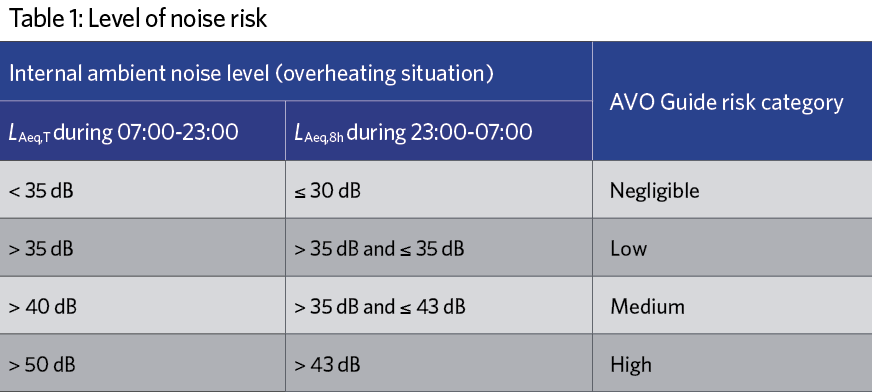
Suggested risk categories based on the resultant internal noise level
In the daytime, the ‘high risk’ category results if internal levels exceed 50dBA, on the basis that speech communication will be significantly affected. At night, the ‘high risk’ category relates to the World Health Organization Night Noise Guidelines level for which ‘adverse health effects occur frequently and a sizeable proportion of the population is highly annoyed and sleep-disturbed’.
However, it is important to note that the values presented in the table should not be regarded as fixed thresholds and the risk of an adverse effect occurring will also depend on how frequently, and for what duration, the mitigation of overheating is likely to result in increased internal noise levels.
For mechanical services, it is suggested that the internal ambient noise levels given in Table 1.5 of CIBSE Guide A should be achieved for ADF extract ventilation conditions. For the overheating condition, reference is made to the additional guidance in Section 1.10.10 of CIBSE Guide A, which states that a range of +/-5dB on the Table 1.5 values may be acceptable, depending on the particular situation.
The mechanical services noise targets for the overheating condition are based on systems operated to meet the overheating criterion (such as TM59). It may be acceptable for systems to have a boost mode (included for occasional use with louder fan noise) provided that this does not form part of the strategy for meeting the overheating criterion and is under
occupant control.
The AVO Guide suggests that testing should be undertaken to confirm that the installed mechanical services meet the target noise levels. The intention is to avoid the situation where installed services are considered too noisy by occupants and therefore not used appropriately.
The worked example sets out the typical design process in terms of:
- The activities that would be undertaken by the acoustic consultant
- The information that the acoustic consultant should be supplying to the other members of the design team (for example, locations where simple opening windows are not likely to be a viable means for controlling overheating)
- The information that the acoustic consultant may need from other members of the design team in order to make their assessment (for example, the area of façade openings and the number of hours that they are required to be open to meet the overheating criterion).
The guide aims to promote a collaborative design process with good communication and timely coordination between the different disciplines. This is hopefully consistent with the integrated design approach advocated by the recently released CIBSE TM60 Good practice in the design of homes. It is acknowledged that on challenging sites, it may be necessary to develop the design iteratively to arrive at a scheme that best addresses acoustics, ventilation and overheating.
The guide aims to promote a collaborative design process with good communication and timely coordination between the different disciplines
To assist designers and environmental health officers, the worked example gives guidance about approximate external noise limits for which each of the Part F template ventilation systems would be appropriate. Similarly, the guide gives examples of passive ventilation solutions that offer a higher level of sound insulation than simple opening windows. These include the use of balconies/winter gardens, attenuated windows and acoustic louvres.
Given that environmental design and building services are so integral to the AVO guidance, the authors would appreciate any feedback from CIBSE members through the online questionnaire.
■ Dr Anthony Chilton is a senior partner at buildling services engineers Max Fordham. He says his goal is to find acoustic solutions that help make buildings more comfortable.



